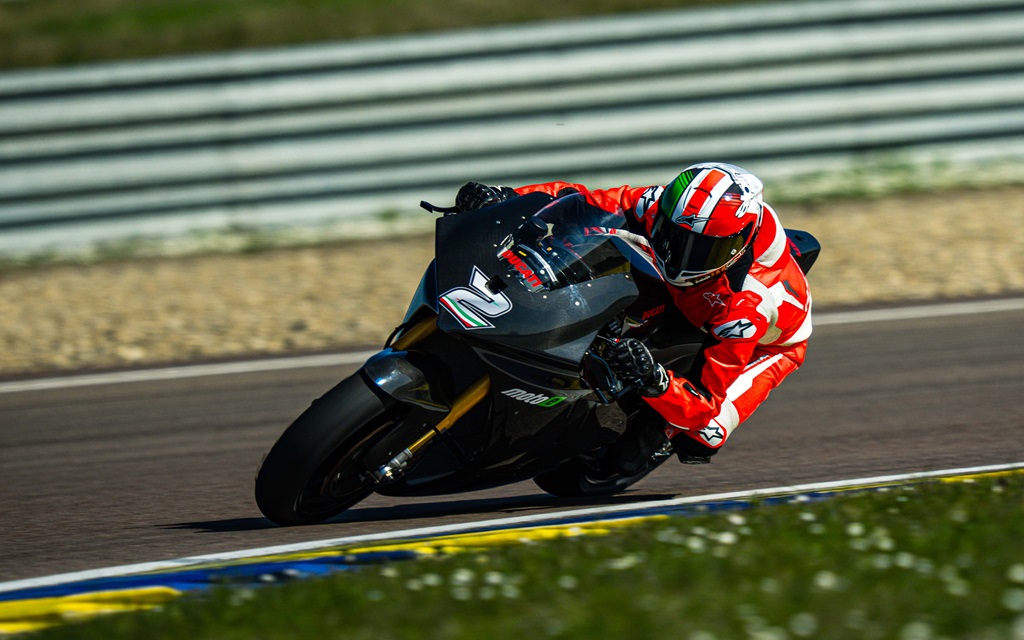Quick, guess which component on your motorcycle is most critically stressed? The one piece of your motorcycle that designers and quality assurance engineers alike spend the most time trying to strain and break. The one thing they have to be sure — 100 per cent, dead nuts certain — is robust enough to withstand the rigours of motorcycling?
Did you guess the frame? Nice try, but the truth is that every main superstructure of virtually every motorcycle sold is tough enough that nothing short of a meeting with the proverbial brick wall is going to do it any (serious) damage. How about the subframe, then, that not nearly as robust portion of the motorcycle’s superstructure that you sit on? Since it’s only meant to carry you (and possibly a passenger), maybe some lackey engineer didn’t build enough of a safety factor into his CAD/CAM design.
Nice try, especially since loading is one of the key points engineers test during their durability testing. But, still no cigar. Nor is it the wheels (though they are prone to cracking over Canadian potholes) or even the rear swingarms that take so much abuse over those same gaping gaps in our highways and bi-ways. Nope, according to BMW Motorrad’s Michael Heimrath — and he should know because he’s in charge of “pre development,” which means he gets to torture GSs and RRs until they break — the single most important thing he tests, the piece of those poor Bimmers he tortures that is never allowed to fail, is the . . .
Handlebar.
Now for those of you who guessed rightly, congratulations. For the rest of you, it’s a no brainer right? Break a handlebar off and the loss of control would be, if not immediate, pretty damned sudden. Even compared with a front tire blow out at 150 kilometres an hour — I’ve had one of those — the loss of a handlebar seems particularly frightening, right? And besides, with all the pounding and such, you can see how they might be prone to fragility.
But here’s the really interesting part — indeed, why this is even a story. According to Heimrath, all that pounding of ground has nothing to do with handlebar breakage. Oh, to be sure, if one of your clip-ons were to snap in two, it would probably be the result of hitting one of the humungous potholes that unfortunately have come to define Canadian roads. But it would not have been the reason for the failure. As they say in engineering school, the breakage may have resulted from said bump, but it wasn’t the cause.
No, the reason handlebars get so much attention is because — and this should have been less of a surprise to me since I do have a mechanical engineering degree, albeit 35 years old — of vibration. Yes, the same annoying second order vibrations that tingle your hands to sleep while you’re gripping the handlebar are also destroying its structural integrity.
Many handlebars these days are built of aluminum and, as Heimrath explains it, AI, though lighter than steel, is also a bit more fragile, especially — as, again, I should have remembered — susceptible to fatigue as a result of vibration. Indeed while aluminum can take a brutal pounding from large loads, what it can’t stand is the tiny little tingling that results from second order vibrations from a four-cylinder motorcycle.
Indeed, as Heimrath tells it, BMW never had much of a problem with handlebar design when it produced nothing but low-revving twins. Yes, a Boxer can occasionally vibrate like buggery, but that’s high amplitude (as in large movements), low-frequency stuff. You know, like the thudda, thudda, whump, whump that old-time Harley owners claim is an enjoyable part of their riding experience.
But it’s high-intensity, small amplitude (on a short clip-on, the bar end may move but a tenth of a millimeter at full flex) vibration that fatigues aluminum. Heimrath says that the worst of it starts at 200 hertz (cycles per second) and continues right up until about 500 Hz. For context, he explains that the worst road in the world will only excite — that’s engineering-speak for stress — the handlebar at 35 or less Hz, but that a four-cylinder motorcycle engine will have the handlebars hitting that critical 200 Hz mark by about 6,000 rpm. Yes, your S1000RR starts torturing its clip-ons just when you’re starting to have fun.
That’s why every single handlebar in BMW’s lineup undergoes long-term testing. Consider that each test costs, says Heimrath, between 30,000 and 50,000 euros — $50,000 and $80,000 — a not inconsiderate part of his reliability-testing budget. Every single design has to be tested separately because they all fail differently. Clip-ons, for instance, break at the seemingly inconsequential fillet right where the handlebar “stock” is machined down to its finished hand-grip diameter. Single-piece alu-bars — such as the dirt bike-like item on BMW’s R1200 GS — fail right where they clamp into the triple tree (the clamp acts like a pivot point). Whatever the case, handlebars, because of the dire consequences of their failure, have to be perfect. While there is an “acceptable” failure rate of such non-critical parts as, say, a rear cargo rack, Heimrath says that “even a one in ten million parts failure” is unacceptable for handlebars.
Oh, and by the way, despite a growing consensus amongst Canuckian bikers, the worst roadways in the world aren’t in Canada. Heimrath, who makes a living trying to find the worst roads to test motorcycles on, says the most catastrophic conditions are found in India where a combination of poor construction and politics (local municipalities deliberately hide their speed) load up his bikes twice as much as any in the rest of the world. Let’s hope this is one area where we can’t keep up with the world’s fastest-growing economy.






